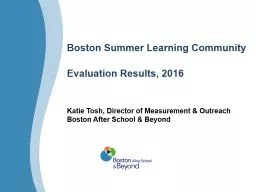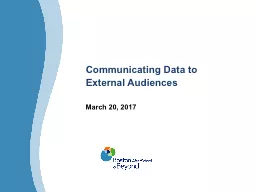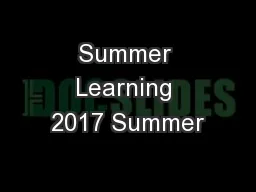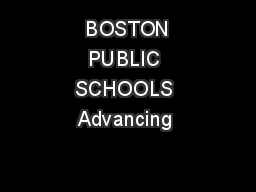PPT-Boston Summer Learning Community
Author : briana-ranney | Published Date : 2018-01-22
Evaluation Results 2016 Katie Tosh Director of Measurement amp Outreach Boston After School amp Beyond Contents Enrollment amp Attendance Findings ACT Framework
Presentation Embed Code
Download Presentation
Download Presentation The PPT/PDF document "Boston Summer Learning Community" is the property of its rightful owner. Permission is granted to download and print the materials on this website for personal, non-commercial use only, and to display it on your personal computer provided you do not modify the materials and that you retain all copyright notices contained in the materials. By downloading content from our website, you accept the terms of this agreement.
Boston Summer Learning Community: Transcript
Download Rules Of Document
"Boston Summer Learning Community"The content belongs to its owner. You may download and print it for personal use, without modification, and keep all copyright notices. By downloading, you agree to these terms.
Related Documents














![[DOWNLOAD] Lumos Summer Learning HeadStart, Grade 2 to 3: Fun Activities, Math, Reading,](https://thumbs.docslides.com/1007803/download-lumos-summer-learning-headstart-grade-2-to-3-fun-activities-math-reading-vocabulary-writing-and-language-practice-standards-aligned-summer-summer-learning-headstart-by-lumos-learning.jpg)